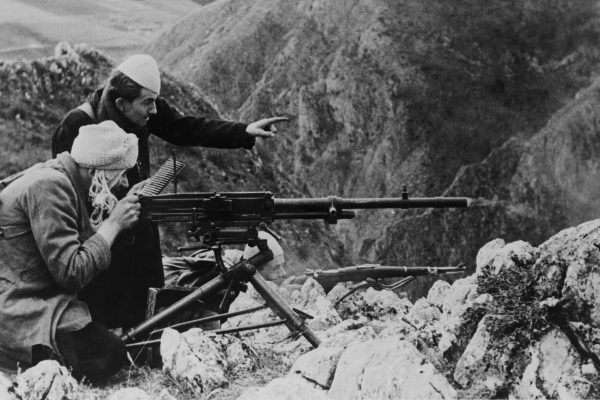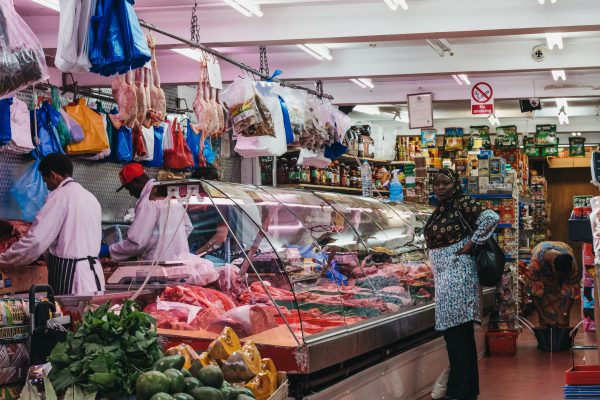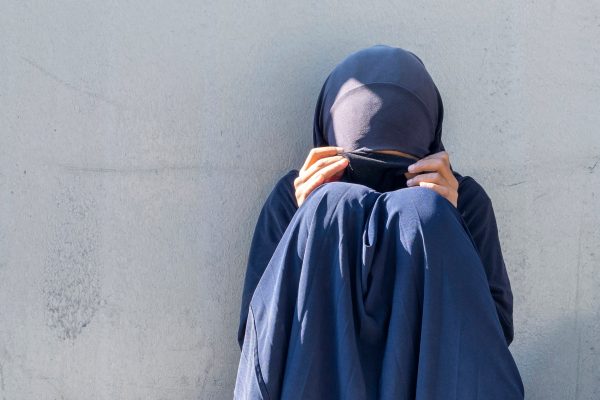In one particularly telling example, The Sun reported an attacker who opened fire on shoppers at a Spanish supermarket whilst screaming Allahu Akbar. The Sun headlined the article ‘Supermarket Terror’. However, the Spanish police later stated that the suspect had shouted something in the Basque language, and not Allahu Akbar. The Sun then retracted the claim and retitled the article ‘Supermarket Horror’.
In one particularly telling example, The Sun reported an attacker who opened fire on shoppers at a Spanish supermarket whilst screaming Allahu Akbar. The Sun headlined the article ‘Supermarket Terror’. However, the Spanish police later stated that the suspect had shouted something in the Basque language, and not Allahu Akbar. The Sun then retracted the claim and retitled the article ‘Supermarket Horror’.
As the Christchurch shooter, Brenton Tarrant is being sentenced, the Muslim Council of Britain’s Centre for Media Monitoring (CfMM) has released a damning report on how the British media reports terrorism.
The 165-page report features qualitative and quantitative analysis of media coverage of 16 terrorist attacks between 2015-2020, amounting to over 230,000 articles published in 31 national online media outlets.
Consistently inconsistent
The key finding of the report is the consistent inconsistency in how ‘Muslim’ and ‘non-Muslim’ perpetrators are covered. In particular:
- Between 2015-19, the terms ‘Islam’ or ‘Muslims’ were nine times more likely to be used alongside ‘terror’, ‘terrorist’ or ‘terrorism’ than the terms ‘far-right’, ‘neo-Nazi’ or ‘white supremacist’.
- There is a disproportionate use of the term ‘lone-wolf’ when describing non-Muslim terror suspects. White supremacist terrorists were almost exclusively described as mentally unwell. The use of ‘lone-wolf’ implies that the threat is isolated and contained. Consequently, attacks from Muslim assailants are presented as greater threats to wider society.
- The term lone-wolf is used even when far-right perpetrators are part of a broader network. Brenton Tarrant, Anders Breivik, and others all have extensive links to white-supremacist networks, though they have all been described using the phrase ‘lone-wolf’.
- The near-exclusive use of ‘mental illness’ as an explanatory factor for white-supremacist attacks perpetuates the myth that Muslim attackers are motivated solely by ideology and religion.
- Media outlets are hesitant to describe far-right attacks as terror attacks. Analysis of six terror attacks showed that 70% of articles on ‘Islamist’ attacks mention terror or related terms, whilst only 10% of articles on far-right attacks mention terror or related terms.
Unreliable sources
Media outlets also habitually reported inaccuracies and depend on unreliable sources, which worsens the public perception of British Muslims. In one particularly telling example, The Sun reported an attacker who opened fire on shoppers at a Spanish supermarket whilst screaming Allahu Akbar. The Sun headlined the article ‘Supermarket Terror’. However, the Spanish police later stated that the suspect had shouted something in the Basque language, and not Allahu Akbar. The Sun then retracted the claim and retitled the article ‘Supermarket Horror’.
Appropriating everyday Muslim vernacular
Moreover, media outlets commonly appropriate everyday Muslim vernacular and present them in the context of terrorism, essentially exploiting religious illiteracy for the sake of sensationalism. The CfMM roundtable agreed that ‘Allahu Akbar’ had been overused and exploited by the media. This has created confusion around the phrase. Senator Ilhan Omar’s 7-year-old tweet which read ‘Allahu Akbar :) #LifeisGood’ was perceived by white supremacist blogs as meaning she supported the death of the US ambassador to Libya.
45% of all uses of ‘Allahu Akbar’ in headlines between January 2016 and December 2019 were by the Mail Online.
The ‘Oxygen of Publicity’
Terrorist attacks are newsworthy because of their relative improbability compared to other forms of crimes, but the excessive, biased, and sensationalist media coverage provides terrorist propaganda with significant publicity.
Despite New Zealand’s police urging the public not to share footage of the Christchurch attack, The Mail, The Sun, and The Mirror all ran parts of the video. The Mail Online even hosted the attacker’s manifesto, and removed it later that day. This publicity can lead to what academics call the ‘Copycat Phenomenon’ – when others are motivated to repeat a style of attack.
Christchurch coverage
The white-supremacist terrorist Brenton Tarrant killed 51 Muslims on 15th March 2019. May Allah forgive those who lost their lives, and grant them Jannatul Firdaus, amen. This was followed by worrying coverage from British media outlets:
- Media outlet features drew attention to the preparator’s good qualities. In a double-page spread, The Daily Mirror included a bold headline ‘For Rotherham’, creating an association between Asian grooming gangs and the Christchurch shooting. The Mail Online suggested that the preparator’s actions were caused by his travels and his father dying from cancer.
- Most papers used terms such as ‘gunman’, ‘racist’, ‘far-right’ or ‘white supremacist’, rather than calling him a terrorist. The Sun and I News were of the few outlets that referred to the attacker as a terrorist.
- Broadcast coverage was better than print coverage, with outlets such as Sky News and ITV News consistently referring to the attack as a terror attack.
- On several occasions, mainstream outlets featured far-right voices without adequate challenge. For example, BBC Newsnight featured Benjamin Jones from the white-supremacist group Generation Identity and provided very little challenge to his claim that Islam is an ideology that drives hate crime. Similarly, a caller on the Jeremy Vine show blamed Muslims for the shooting, with no challenge from the host.
On a positive note, news coverage has changed for the better when reporting on white supremacist attacks post-Christchurch. This is in part due to the scale of the attack, and the remarkable response of Jacinda Arden.
In particular, Sky News has strengthened its reporting and is much quicker in identifying white supremacist inspired attacks as terrorist attacks. The BBC has also shown several clear examples of improvement, with presenters providing straightforward challenges and corrections to racist claims.
Recommendations, and a note of optimism
The report ends with 11 recommendations on improving reporting terrorism, including avoiding headlining ‘Allahu Akbar’, creating spurious links between common Islamic practices and terrorism, and only platforming white-supremacist views when those views can be contextualised and challenged.
Whilst much of the report provides robust evidence to prove the colloquially known and experienced bias of British media, some saplings of optimism can be seen. There has been some improvement in coverage post-Christchurch, with the terror attack perhaps shaking the consciouses of some news outlets to treat terrorism coverage with responsibility and seriousness.
Moreover, the CfMM has demonstrated brilliant growth in producing this high-quality, sound, and robust report to challenge the unfair reporting of the media. By naming-and-shaming of particular outlets, such as Mail Online, and praise of others, such as Sky News, the report creates a convincing case for all such outlets to improve or continue to improve.
To this effect, we must share the report as widely as possible to contribute to this positive change. Moreover, the CfMM regularly hosts seminars to teach other Muslims to challenge media outlets. With a sharper and more savvy community, we can continue to hold media outlets to account, and finally end the biased and dangerous reporting of media outlets.





